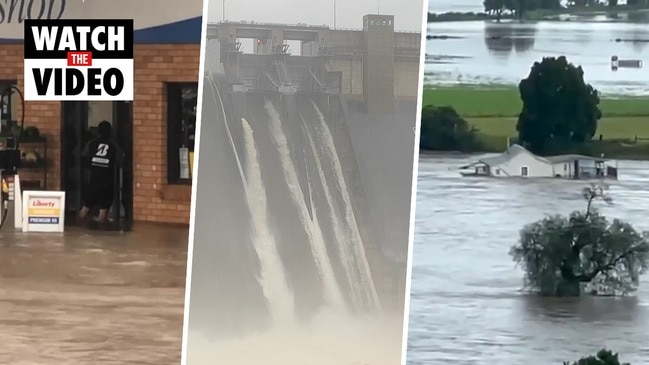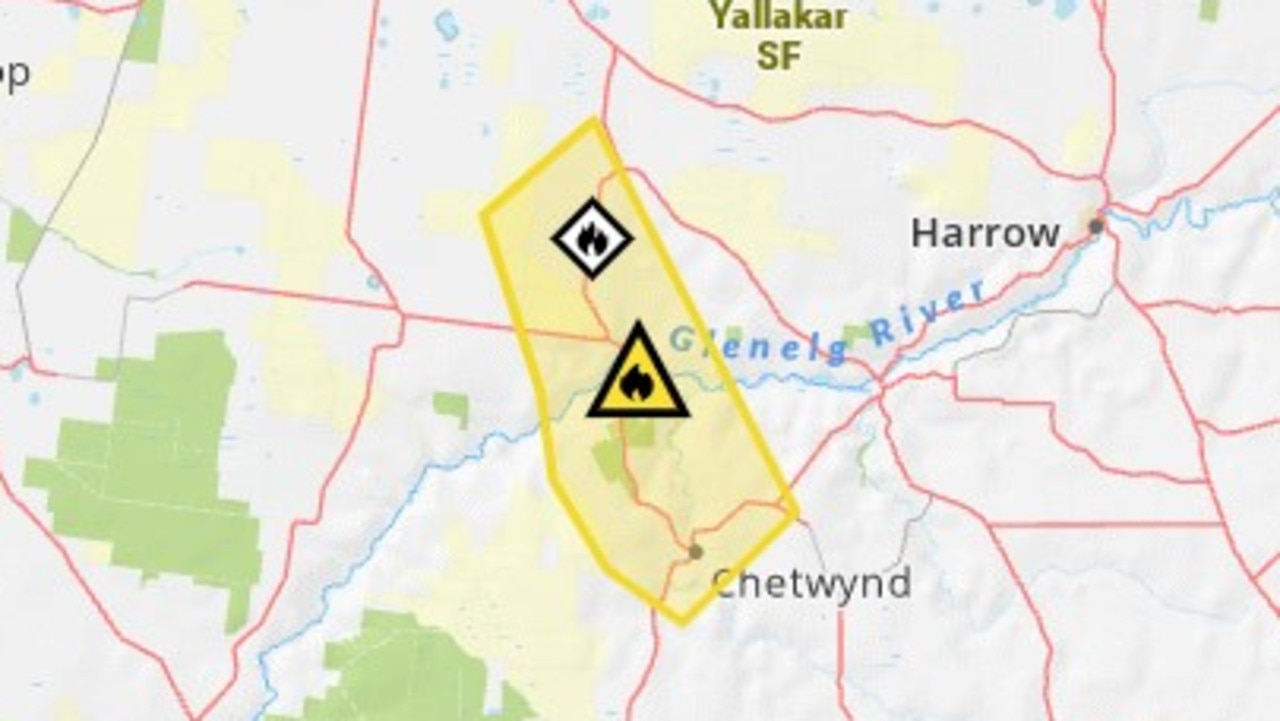‘One-in-100 year’ rain could become norm, say climate watchers
The extreme rain is being called a once in a century event, but there are warnings similar deluges could happen far more often due to climate change.

Climate Change
Don't miss out on the headlines from Climate Change. Followed categories will be added to My News.
The extreme weather walloping NSW has been described as a “one-in-100 year” event.
In some areas, a metre of rain has fallen while the Bureau of Meteorology has flood alerts in place for every river in the state from the Queensland border to Victoria.
But we might need to get used to there being far less than a century gap between the next deluge, climate watchers have said.
Short, sharp episodes of extreme rain amid drought and rising temperatures could be the new weather normal for Australia.
“It’s very conceivable that we could get average rainfall decreasing, but extreme rainfall events where it just dumps in a single day,” Dr Ailie Gallant from the Monash University Climate Change Communication Research Hub told news.com.au.
On Sunday, NSW Premier Gladys Berejiklian spelled out the seriousness of the current rain event that has seen mid north coast towns flood as well as several Sydney suburbs.
“One in 50 year floods (are being seen) in the Sydney metropolitan area, one in 100 year floods in the mid-north coast,” Ms Berejiklian said.
“So this is a very serious storm and flood event, and there will be a big clean-up operation on the other side.”
RELATED: Follow our blog for live flood updates

The BOM describes a one-in-100 year weather event as one in which there is statistically only a 1 per cent chance of it be equalled or exceeded in the year after it occurs.
But that doesn’t meant it won’t happen for another century – it could happen again the very next week. After a decade, for instance, there is a 10 per chance that the same extreme weather could rear its head again.
NSW has seen several major floods over the last few decades. A major Sydney flood in 1986 killed six people. Northern NSW experienced major floods in 2013 and 2012.
RELATED: New ‘floodproof’ bridge goes under

But Dr Gallant cautioned about assuming all these events, extreme as they all were, were the same.
“Every weather event is unique in its spatial signature in how much rain falls,” she said.
For instance, the current weather is remarkable for its vast geographic spread across the east coast.
“But there is some evidence that particularly in northern Australia extreme rain events are increasing,” she added.
Yet, it’s often assumed that climate change means drier conditions. That was true, said Dr Gallant, but extreme rainfall can also be a by-product of a warming planet.
“A warmer atmosphere can hold more water vapour and scientists calculate that this can increase moisture in the atmosphere by approximately 7 per cent per degree of global warming.”
Unfortunately, it doesn’t mean more rain neatly spread out through the year gently watering crops.
Instead, it can mean less moisture concentrated in intense and damaging one or two day downpours that wash the crops away.
“The evidence is for really extreme events, with several days of heavy rainfall which cause floods,” she said.

A study led by Dr Nicholas Herold from the NSW Department of Planning, Industry and Environment on future climate projections over south eastern Australia found that extreme rainfall events for Sydney, Melbourne, Adelaide and Brisbane – that now occur roughly once every 20 years – are expected to occur every 10 years or so, or double the frequency, in the second half of this century.
The emphasis is on one or two day rain events. The long running prolonged extreme weather outbreaks – like we’re having now – may not be as common. We may get the same one-in-50 or 100-year rainfall, but over a shorter period.
Dr Gallant said climate models were pointing to overall less rainfall in Australia.
Those drier conditions would be concentrated in southern Australia with heavy rainfall events focused in the northern half of the country, where tropical moisture is more prevalent.
The current rain in NSW was a combination of factors, Dr Gallant said. The La Nina climate driver had led to wetter conditions anyway, and then two weather systems had combined to pour rain onto the east coast.
However, it might not be 100 or even 50 years until we see a similar damaging burst of intense weather in the future, she said.
“We should expect increases in extreme rainfall events – we can say that with high confidence. But by how and where those events are, the jury is still out on that.”
Originally published as ‘One-in-100 year’ rain could become norm, say climate watchers



